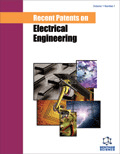Abstract
Microdisk, Microring, Microcylinder, and various curvilinear-shape optical resonators with sizes from submicron to hundreds of microns have become a widely used technology. We refer to them collectively as optical microresonators. These optical microresonators can be used as highly compact tunable optical filters integrated on chip. They can also be used to form wavelength-scale optical cavities for realizing microcavity lasers and various microcavity devices. There are few systematic studies of the limitations of these microresonators. Knowing their limitations is important for various practical applications. We first review the various progresses in these optical microresonators, followed by a discussion of the main factors affecting the cavity Q factor of these microresonators. To understand radiation loss, we show a numerically accurate method to compute the radiation loss using conformal transformation. We discuss how to simulate lasing properties of these optical microresonators by using a multi-level multi-electron Finite-Difference Time-Domain (MLME FDTD) quantum model for the semiconductor medium. We then discuss how to compute radiation loss and scattering loss using a FDTD method based on an active-lasing approach and to compare the results to the conformal transformation results. Lastly, we address the important question of how to optimize output coupling of the lasing light in these optical resonators utilizing either a conventional tangential waveguide coupling method or a novel radial waveguide coupling method.





















